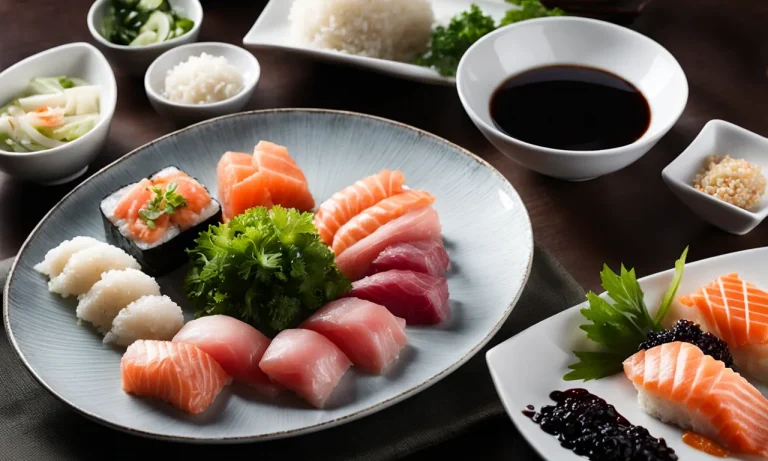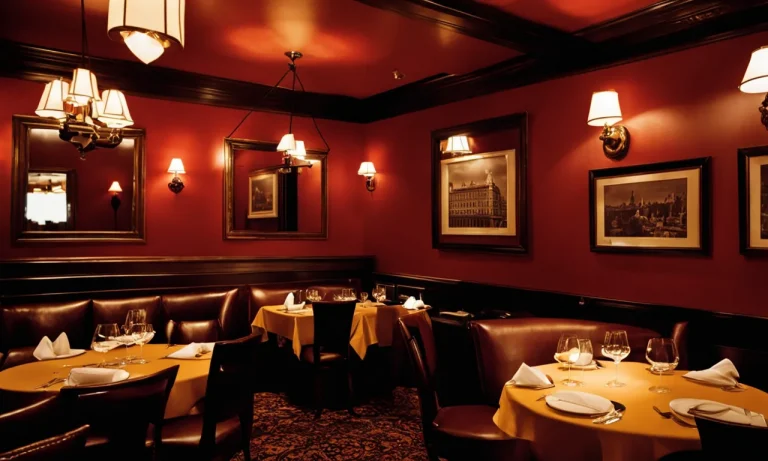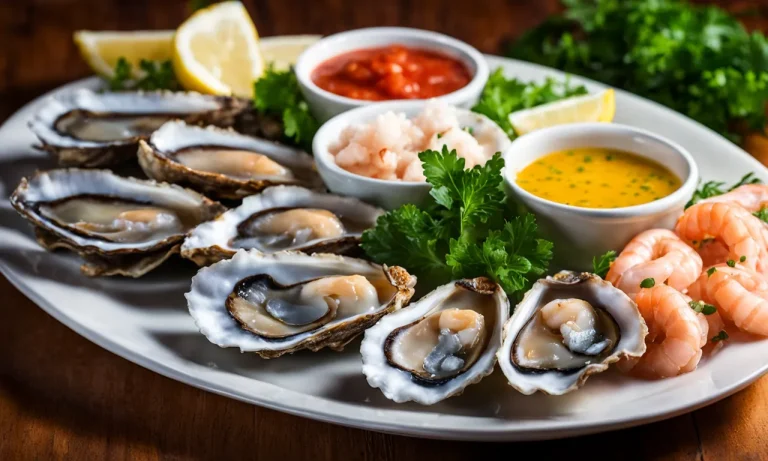Eating out at a restaurant can be a fun and enjoyable experience. However, one question that often comes up is how much to tip the server. Tipping is an important part of dining etiquette in most cultures and helps show your appreciation for good service.
If you’re short on time, here’s a quick answer to your question: aim to tip around 15-20% of the total bill before taxes. But keep reading for a more in-depth look at how to calculate the right tip amount based on service quality, restaurant type, and other factors.
In this comprehensive guide, we’ll cover everything you need to know about tipping at a restaurant, from general tipping guidelines to special situations and FAQs. You’ll learn tips and strategies to tip properly for great service.
Basic Tipping Guidelines
When dining at a restaurant, tipping is an important part of the dining experience. It shows appreciation for the service provided by the waitstaff, and helps to support their livelihood. Here are some basic tipping guidelines to keep in mind:
Standard tip amount
The standard tip amount for good service is generally 15% to 20% of the total bill. This means that if your bill comes to $50, a 15% tip would be $7.50 and a 20% tip would be $10. However, it’s important to note that tipping is discretionary and you can adjust the tip amount based on the quality of service you received.
Factors that affect tip amount
Several factors can influence the tip amount you choose to leave. These include:
- The quality of service: If the waitstaff went above and beyond to make your dining experience enjoyable, you may want to tip more generously.
- The size of your party: If you’re dining with a large group, it’s customary to leave a higher tip as the waitstaff had to work harder to accommodate your party.
- The difficulty of the order: If you had a complex order or special dietary requests, consider leaving a larger tip to acknowledge the extra effort put in by the waitstaff.
Remember, tipping is voluntary and should be based on your own judgment and satisfaction with the service.
Tipping methods and etiquette
When it comes to tipping, there are a few methods and etiquette guidelines to keep in mind:
- Tipping in cash is preferred: While some restaurants may allow you to add the tip to your credit card payment, it’s generally preferred to tip in cash. This ensures that the waitstaff receives their tip directly.
- Calculate the tip correctly: Use a calculator or the tip calculator feature on your smartphone to ensure you’re leaving the correct amount. It’s always better to be precise.
- Leave the tip discreetly: After paying the bill, discreetly leave the tip on the table or hand it directly to the waitstaff. Avoid making a show of it or discussing the tip amount with others at the table.
By following these basic tipping guidelines, you can show your appreciation for the service provided by the waitstaff and contribute to a positive dining experience for everyone involved.
Tips for Different Dining Scenarios
Sit-down vs. counter service
When it comes to tipping at a sit-down restaurant, it is customary to leave a gratuity of around 15-20% of the total bill. This percentage may vary depending on the level of service received and the overall dining experience.
On the other hand, at a counter service establishment where you order at the counter and seat yourself, tipping is not mandatory, but if you received exceptional service or want to show appreciation, leaving a small tip is always a nice gesture.
Large groups
When dining with a large group, it is important to check if the restaurant includes an automatic gratuity for parties of a certain size. If not, it is recommended to tip at least 18-20% of the total bill to account for the added complexity and extra effort required to serve a larger party.
Splitting the bill evenly among the group and adding the tip together can help simplify the process.
Takeout orders
When picking up food for takeout, it is not necessary to leave a tip, as the service provided is limited to packaging and preparing the order. However, if you received exceptional service or if the staff went above and beyond to accommodate your needs, leaving a small tip is a thoughtful way to show your appreciation.
Delivery orders
When ordering food for delivery, it is customary to tip the driver. The standard tip for delivery is around 10-20% of the total bill, depending on factors such as distance traveled, weather conditions, and the level of service provided.
Remember, the delivery driver relies on tips as a significant part of their income, so please consider their efforts when deciding on the tip amount.
Buffets and cafeterias
At buffets and cafeterias, where you serve yourself and pay at the counter, tipping is not mandatory. However, if the staff assists with clearing plates, refilling drinks, or providing any additional services, it is appropriate to leave a small tip as a token of appreciation.
A tip of $1-2 per person is generally considered sufficient in these situations.
Bars and lounges
When ordering drinks at a bar or lounge, it is customary to tip the bartender. The standard tip for a drink is around $1-2 per drink, or 15-20% of the total bill if you are running a tab. If the bartender goes out of their way to create a personalized cocktail or provides exceptional service, consider leaving a larger tip to show your gratitude.
Regional Differences in Tipping
United States
Tipping is a common practice in the United States, where it is customary to tip waitstaff, bartenders, and other service providers in the hospitality industry. The general rule of thumb is to tip around 15-20% of the total bill, although this can vary depending on the level of service received.
It’s worth noting that in some states, such as New York and California, the minimum wage for tipped employees is lower than the standard minimum wage, so tipping is an essential part of their income.
Canada
Tipping customs in Canada are similar to those in the United States, with 15-20% being the standard tip for good service. However, it’s important to note that tipping practices can vary by province. For example, in Quebec, it is common to tip around 10%, while in other provinces, such as Ontario, the standard 15-20% tip is expected.
Europe
Tipping customs in Europe can vary significantly from country to country. In some European countries, such as France and Italy, a service charge is often included in the bill, so tipping is not necessary.
However, it is still customary to round up the bill or leave a small amount as a token of appreciation. In other countries, such as the United Kingdom, a 10-15% tip is generally expected, especially in restaurants with table service.
Asia
Asia has its own unique tipping customs. In countries like Japan and South Korea, tipping is not a common practice and can even be seen as rude. Instead, excellent service is expected as a standard, and tipping can be seen as questioning the professionalism of the staff.
However, in some tourist areas or upscale establishments, a small tip may be appreciated. It’s always a good idea to research the tipping customs of the specific country you are visiting.
South America
In South America, tipping practices can vary by country. In countries like Argentina and Brazil, a service charge is often included in the bill, so tipping is not required. However, leaving a small tip for exceptional service is appreciated.
In other countries, such as Peru and Chile, a 10% tip is generally expected in restaurants. As always, it’s best to familiarize yourself with the tipping customs of the specific country you are visiting.
Special Situations
Bad service
While it’s never pleasant to receive bad service at a restaurant, it’s important to handle the situation with grace. If you encounter a server who is rude or neglectful, consider speaking with the manager to address your concerns.
In some cases, you might decide to leave a smaller tip than usual to reflect the poor service. However, it’s essential to remember that tipping is a way to reward good service, and it’s still important to acknowledge the efforts of the other staff members who may have contributed positively to your dining experience.
Exceptional service
When you receive exceptional service at a restaurant, it’s a great opportunity to show your appreciation. If your server goes above and beyond to ensure your dining experience is memorable, consider leaving a generous tip.
You might even want to speak with the manager to commend the outstanding service you received. Remember, a well-deserved tip not only rewards the server but also encourages them to continue providing exceptional service to other customers.
Splitting the bill
Splitting the bill can sometimes be a hassle, especially when dining with a large group of people. To make the process easier, consider using a bill-splitting app or asking the server to provide separate checks.
When it comes to tipping in this situation, it’s customary to calculate the tip based on the total bill before dividing it among the diners. However, if the service provided by the server was exceptional or below par, it’s acceptable to adjust the tip amount accordingly.
Tipping in foreign countries
When traveling abroad, it’s essential to familiarize yourself with the tipping customs of the country you are visiting. Tipping practices can vary significantly from one country to another. In some countries, tipping is not expected or may even be considered rude.
In others, it is customary to leave a specific percentage of the bill as a tip. Researching the local customs or asking locals for guidance can help you navigate the tipping etiquette in foreign countries.
Websites like TripAdvisor or Lonely Planet are great resources to find information on the tipping practices of different countries.
Tipping FAQs
Should you tip on the pre-tax or post-tax amount?
When it comes to calculating your tip at a restaurant, it is generally recommended to base it on the pre-tax amount. This is because taxes are not considered part of the service provided by the waitstaff. By tipping on the pre-tax amount, you are acknowledging the quality of service you received.
Is tipping required?
Tipping is not legally required in most countries, but it is customary and expected in many industries, especially in the service industry. It is important to remember that for many waitstaff and other service professionals, tips make up a significant portion of their income.
By tipping, you are showing appreciation for their hard work and dedication.
How much should you tip hotel staff?
When it comes to tipping hotel staff, such as housekeeping or bellhops, the amount can vary. A general guideline is to tip around $2 to $5 per day for housekeeping and $1 to $2 per bag for bellhops. However, it is always a good idea to consider the quality of service you received and adjust the tip accordingly.
If the service was exceptional, feel free to show your appreciation by tipping more.
Should you tip in cash or on a card?
While tipping in cash is the traditional method, many restaurants and establishments now offer the option to add a tip to your credit card payment. Both methods are acceptable, and it ultimately depends on your preference.
However, it is worth noting that when you tip in cash, you can ensure that the tip goes directly to the staff without any deductions or delays. Additionally, tipping in cash allows you to show your appreciation immediately, which can be a nice gesture.
Conclusion
Tipping at a restaurant doesn’t have to be confusing or stressful. By following the standard tipping guidelines and considering factors like service quality, you can tip properly for any dining situation. Keep regional differences and special scenarios in mind as well.
With this comprehensive guide, you now have the knowledge to tip appropriately and show your server appreciation after a great dining experience.
Remember, tipping is ultimately at your discretion. Focus on tipping in a way that feels fair and reasonable for the service you received. Following these tips will help you become an informed and gracious tipper.






